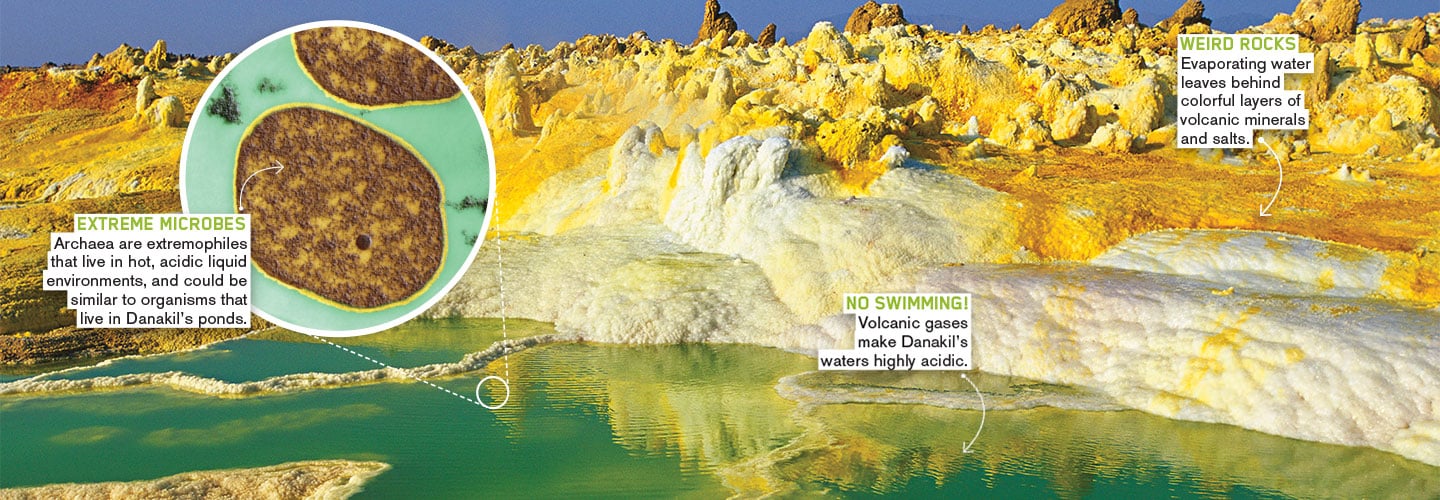A region in East Africa looks more like the surface of an alien planet than a landscape you’d expect to find on Earth. Scientists are drawn to its unusual features because they want to learn under what conditions life might exist beyond our planet.
Felipe Gómez is a microbiologist at the Centro de Astrobiología in Madrid, Spain. He has been to this otherworldly area of East Africa to study its extremophiles—microbes that live in some of the harshest places on Earth. Many scientists think alien life would likely resemble these tiny organisms.
“When you arrive at the area, it’s like being on Mars—there’s nothing around,” says Gómez. “But as you approach, you climb to the top of a hill and look down into a basin to see colorful mineral formations and pools of water—it’s really amazing.”
This strange place is called the Danakil Depression, and it’s found in the desert of Dallol, Ethiopia. What Gómez hopes to discover there could help scientists identify extreme environments throughout the universe where life could survive.
A region in East Africa doesn’t look like a landscape you’d expect to find on Earth. It looks more like the surface of an alien planet. Scientists are drawn to its features. It might help them answer a big question: Under what conditions might life exist beyond Earth?
Felipe Gómez is a microbiologist at the Centro de Astrobiología in Madrid, Spain. He has been to this strange area of East Africa to study its extremophiles. These microbes live in some of the harshest places on Earth. Many scientists think alien life would probably be like these tiny organisms
“When you arrive at the area, it’s like being on Mars—there’s nothing around,” says Gómez. “But as you approach, you climb to the top of a hill and look down into a basin to see colorful mineral formations and pools of water—it’s really amazing.”
This strange place is called the Danakil Depression. It’s found in the desert of Dallol, Ethiopia. Gómez hopes to discover an important clue there. It could help them find extreme environments throughout the universe where life could survive.

